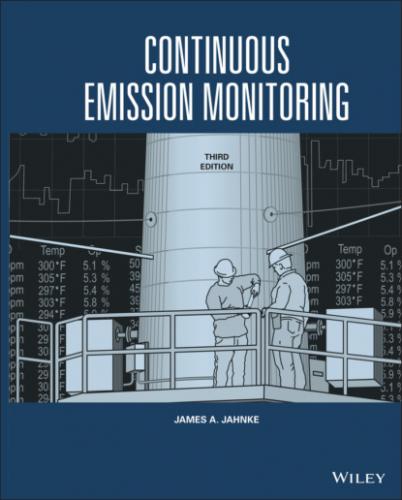Instruments using these methods are able to measure gases at part per trillion levels. The CRDS and ICOS techniques are discussed in Chapter 5.
Optical Components
In most electro‐optical analyzers, other components are used to direct and focus light. The following components can be found in gas monitoring instrumentation:
Neutral density filters
Lenses
Mirrors (concave and triple)
Beam splitters (half‐silvered mirrors)
Optical light fibers
Rotating shutters/window slits/irises
Lenses, slits, and diaphragms are used to focus light on through the system. Plain glass windows are used to separate the primary optical system from flue gases. Optical light fibers can be used to transmit light from the stack to a spectrometer or can route light in a spectrometer to simplify otherwise complex lens or mirror arrangements. Rotating shutters are used to reflect or block light to create oscillating signals.
Figure 4‐16 Constructing a spectrophotometer.
A half‐silvered mirror is a partially silvered mirror which both reflects and transmits light – essentially enabling two functions out of one component in an optical design. Half‐silvered mirrors may be more familiar in their application in mirrored sunglasses, or the “transparent mirror” seen in movies or amusement centers. Half‐silvered mirrors can be found in most double‐pass opacity monitors and in‐situ gas analyzers.
Constructing a Spectrophotometer
The components discussed above are used in various combinations in the construction of pollutant gas monitors. Putting them together, one can construct a spectrophotometer for gas measurements (Figure 4‐16), or a particulate monitor for light scattering or light transmission measurements. Different combinations of these components will be examined in the following chapters that discuss the many unique systems commercially available today.
REFERENCES
1 Doussin, J.F., Ritz, D., and Carlier, P. (1999). Multiple‐pass cell for very‐long‐path infrared spectrometry. Applied Optics 38: 4145–4150.
2 Durham, M.D., Ebner, T.G., Burkhardt, M.R., and Sagan, F.J. (1990). Development of an ammonia slip monitor for process control of NH3 based NOx control technologies. In: Proceedings – Continuous Emission Monitoring – Present and Future Applications (ed. J.A. Jahnke), 227–238. Pittsburgh: Air & Waste Management Association.
3 Ensor, D.S. and Pilat, M.J. (1971). Calculation of smoke plume opacity from particulate air pollutant properties. Journal of the Air Pollution Control Association 21: 496–501.
4 Faist, J., Capasso, F., Sivco, D.L. et al. (1994). Quantum cascade laser. Science 264: 553–556.
5 Frisch, M.B. (1996). The spectra scan family of trace gas monitors based on tunable diode laser spectroscopy. Paper presented at the Air & Waste Management Association meeting, Nashville. June, paper 96‐TP26B.05.
6 Herriott, D. and Schulte, H. (1965). Folded optical delay lines. Applied Optics 4 (8): 883–891.
7 Hinkley, E.D. (1972). Development and Application of Tunable Diode Lasers to the Detection and Quantitative Evaluation of Pollutant Gases. Final Technical Report. Prepared for the Environmental Protection Agency. Research Triangle Park: MIT Lincoln Laboratory.
8 Hinkley, E.D. and Kelley, P.L. (1971). Detection of air pollutants with tunable diode lasers. Science 171: 635–639.
9 Imasaka, T. and Ishibashi, N. (1990). Diode lasers and practical trace analysis. Analytical Chemistry 62 (6): 363A–371A.
10 International Standards Organization (ISO) (2015). Optics and photonics – spectral bands. ISO Standard 20473:(2007). (R2015). Geneva: Central Secretariat.
11 Jahnke, J. A. (1984). Transmissometer Systems – Operation and Maintenance, an Advanced Course. EPA 450/2‐84‐004. Research Triangle Park, NC: Environmental Protection Agency‐Air Pollution Training Institute.
12 Kosterev, A., Wysocki, G., Bakhirkin, Y. et al. (2008). Application of quantum cascade lasers to trace gas analysis. Applied Physics B 90: 165–176.
13 Lerner, E.J. (1998). Diode‐laser wavelengths shift deeper into the infrared. Laser Focus World 34: 95–102.
14 Mettler‐Toledo (2017). Tunable diode laser spectroscopy – theory and background. https://www.mt.com/us/en/home/library/guides/process‐analytics/TDL‐booklet.html (accessed 3 June 2021).
15 Middleton, W.E.K. (1968). Vision Through the Atmosphere. Toronto: University of Toronto Press.
16 O’Keefe, A. and Deacon, D.S.G. (1988). Cavity ring‐down optical spectrometer for absorption measurements using pulsed laser sources. Review of Scientific Instruments 59: 2544–2555.
17 Pilat, M.J. and Ensor, D.S. (1970). Plume opacity and particulate mass concentration. Atmospheric Environment 4: 163–173.
18 Saltzman, R.S. (1990). A process UV/VIS diode array analyzer for source monitoring. In: Proceedings – Continuous Emission Monitoring – Present and Future Applications (ed. J.A. Jahnke), 227–238. Pittsburgh: Air & Waste Management Association.
19 Thielke, J.F. and Pilat, M.J. (1978). Plume opacity related to particle mass concentration and size distribution. Atmospheric Environment 12: 2439–2447.
20 Vidrine, D.W. and Warren, D. (2000). Chapter 4 – mid infrared spectroscopy. In: Chemical Process Analysis. Ed.: J.M. Chalmers. Sheffield Academic Press.
21 White, J.U. (1942). Long optical paths of large aperture. Journal of the Optical Society of America 32 (5): 285–289.
BIBLIOGRAPHY
1 Barrow, G.M. (1962). Molecular Spectroscopy. New York: McGraw‐Hill.
2 Davies, C.N. (1966). Aerosol Science. London: Academic Press.
3 Hinds, W.C. (1999). Aerosol Technology: Properties, Behavior and Measurement of Airborne Particles, 2e. Hoboken: Wiley‐Interscience.
4 Kakkar, R. (2015). Atomic and Molecular Spectroscopy: Basic Concepts and Applications. Delhi: Cambridge University Press.
5 Kulkarne, P., Baron, P.A., and Willeke, K. (2011). Aerosol Measurement: Principles, Techniques, and Applications. Hoboken: Wiley‐Interscience.
6 Li, J., Yu, B., Zhao, W., and Chen, W. (2014). A review of signal enhancement and noise reduction techniques for tunable diode laser absorption spectroscopy. Applied Spectroscopy Reviews 49: 666–691.
7 Linnerud, I., Kaspersen, P., and Jaeger, T. (1998). Gas monitoring in the process industry using diode laser spectroscopy. Applied Physics B: Lasers & Optics 67: 297–305.
8 Wilks, P. (2006). NIR versus Mid‐IR: how to choose. Spectroscopy Online. Vol. 21 (4). https://www.spectroscopyonline.com/view/nir‐versus‐mid‐ir‐how‐choose
